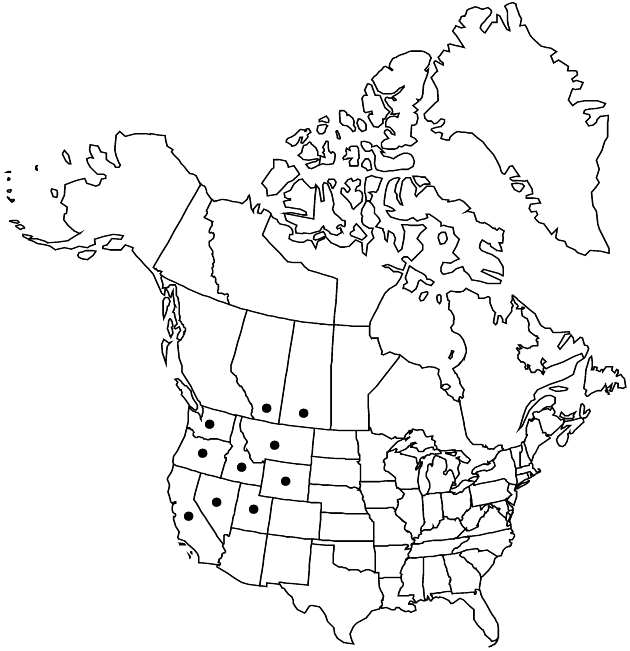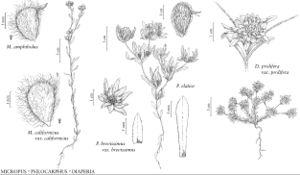Psilocarphus brevissimus var. brevissimus
Plants lanuginose to sericeous. Stems (1–) 2–10, ascending to ± prostrate (sometimes erect). Capitular leaves: longest mostly 8–15 mm, lengths 1.5–4 times widths. Heads ± spheric, largest 6–9 mm, usually densely lanuginose. Receptacles unlobed or shallowly lobed. Pistillate paleae obovoid, lengths 1.5–3 times longest diams.; wings supramedian to subapical. 2n = 28.
Phenology: Flowering and fruiting mid Mar–mid Aug.
Habitat: Drying margins of seasonally inundated sites (vernal pools, ditches), sometimes alkaline
Elevation: 10–2500 m
Distribution

Alta., B.C., Sask., Calif., Idaho, Mont., Nev., Oreg., Utah, Wash., Wyo., Mexico (Baja California), South America (Argentina), South America (Chile)
Discussion
Variety brevissimus occupies nearly the full range of the genus (uncommon west of the Cascade Range); some occurrences toward the northeast appear to be recent introductions.
Plants named Psilocarphus globiferus are superficially somewhat intermediate between P. brevissimus and P. tenellus, as are populations from southern California mountains with leaves somewhat shorter, broader, and less hairy than typical P. brevissimus.
Selected References
None.
